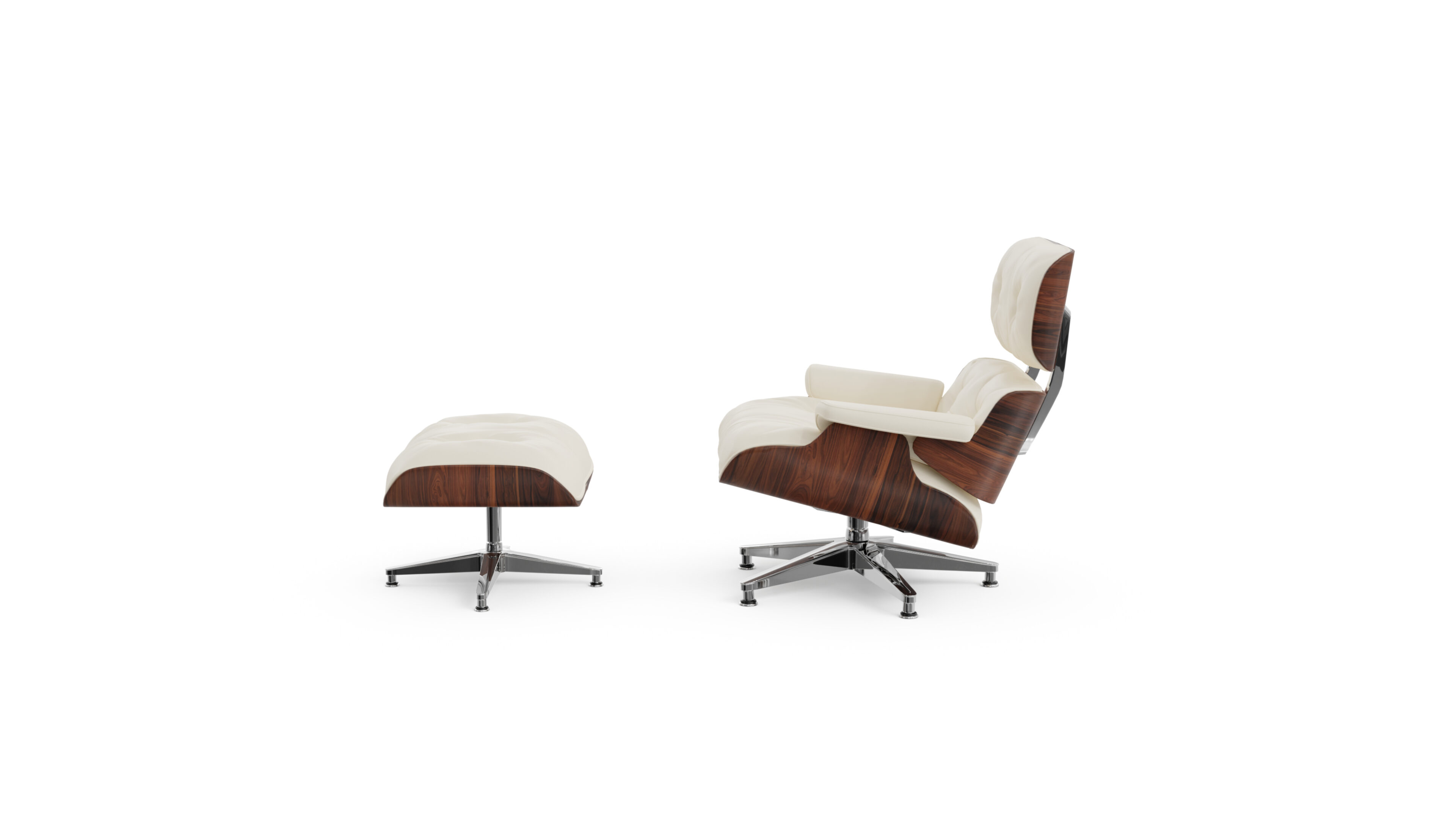
Marco Zanuso Biography
Marco Zanuso (1916-2001) was an Italian architect and designer who played a pivotal role in shaping post-war Italian design. He began his career after graduating from the Politecnico di Milano in 1939. Zanuso is renowned for his innovative approach to industrial design and mass production techniques. His architectural works include the Olivetti factory in Buenos Aires and the IBM factory in Segrate. In furniture design, Zanuso created the iconic Lady Chair (1951), which was recognized for its use of new materials, being one of the first pieces of furniture to use foam rubber padding, revolutionizing seating comfort. He also made significant contributions to product design, including radios and televisions for Brionvega. Zanuso’s multidisciplinary approach still influences Italian and international design throughout the 20th century.
Early Life and Education
Born in 1916 in Milan, Italy, Marco Zanuso grew up in a period of significant cultural and technological change. His formative years coincided with the rise of modernism and the machine age, influences that would later shape his design philosophy. Zanuso pursued his education at the Politecnico di Milano, one of Italy’s most prestigious technical universities, graduating with a degree in architecture in 1939. This education provided him with a strong foundation in both technical and aesthetic aspects of design, which would prove crucial in his later career.
Career and Achievements
Zanuso’s career spanned over five decades, during which he made significant contributions to architecture, furniture design, and industrial design. After graduating, he began his professional career, but it was interrupted by World War II. Following the war, Zanuso emerged as a key figure in the Italian design renaissance of the 1950s and 60s.
In architecture, Zanuso was known for his innovative industrial buildings. The Olivetti factory in Buenos Aires (1954-1961) and the IBM factory in Segrate (1974) exemplify his approach to creating functional yet aesthetically pleasing work environments. These projects showcased his ability to integrate advanced technologies with humanistic design principles.
Zanuso’s furniture designs were equally groundbreaking. The Lady Chair, designed in 1951, is considered one of his most significant contributions. This chair was among the first to use foam rubber padding, a material that was new to the furniture industry at the time. This innovation revolutionized seating comfort and opened up new possibilities in furniture design.
In the field of product design, Zanuso’s work for Brionvega stands out. His designs for radios and televisions, such as the TS 502 radio (1964), combined cutting-edge technology with elegant, user-friendly forms. These products helped establish Brionvega as a leader in electronic design and solidified Zanuso’s reputation as a versatile designer.
Signature Designs
Marco Zanuso’s portfolio spans architecture, furniture, and product design. Some of his most notable works include:
1. Lady Chair (1951): An iconic piece of furniture that pioneered the use of foam rubber padding in seating design.
2. Olivetti Factory, Buenos Aires (1954-1961): An innovative industrial building that balanced functionality with employee well-being.
3. TS 502 Radio for Brionvega (1964): A sleek, portable radio that exemplified Zanuso’s approach to product design.
4. Lambda Chair (1959): A stackable chair designed for mass production, showcasing Zanuso’s interest in industrial manufacturing techniques.
5. IBM Factory, Segrate (1974): Another landmark in industrial architecture, demonstrating Zanuso’s evolving approach to workplace design.
Design Philosophy and Approach
Zanuso’s design philosophy was characterized by a deep interest in technology and its potential to improve human life. He believed that good design should harness the latest technological advancements to create products and spaces that were not only functional but also enhanced the user’s quality of life.
His approach was inherently multidisciplinary. Zanuso saw no strict boundaries between architecture, furniture design, and product design. Instead, he applied principles from one field to another, leading to innovative solutions across all areas of his work.
Zanuso was also a pioneer in embracing industrial production methods in design. He understood that mass production could democratize good design, making it accessible to a wider audience. This led him to create designs that were not only aesthetically pleasing but also suitable for efficient manufacturing.
Throughout his career, Zanuso collaborated with engineers and manufacturers, believing that this interdisciplinary approach was crucial for pushing the boundaries of design. His work often involved extensive research into new materials and production techniques, reflecting his belief that designers should be at the forefront of technological innovation.
Legacy and Influence
Marco Zanuso’s influence on Italian and international design is profound and long-lasting. His multidisciplinary approach, combining architecture, furniture design, and industrial design, set a new standard for holistic design thinking. This approach continues to inspire designers today, encouraging them to think beyond traditional disciplinary boundaries.
In furniture design, Zanuso’s experiments with new materials and forms paved the way for more comfortable and ergonomic seating designs. The Lady Chair, with its innovative use of foam rubber, marked a significant shift in how designers approached seating comfort.
Zanuso’s work in industrial design, particularly his collaborations with electronics manufacturers like Brionvega, helped establish Italy as a leader in this field. His ability to combine technological sophistication with elegant, user-friendly design set a benchmark for product design that remains influential.
In architecture, Zanuso’s approach to industrial buildings, which prioritized both functionality and worker well-being, influenced the development of humane work environments. His ideas about integrating nature and technology in workplace design continue to resonate in contemporary architectural practice.
Zanuso’s legacy is also evident in his impact on design education. As a professor at the Politecnico di Milano, he influenced generations of designers, encouraging them to embrace a multidisciplinary, technology-driven approach to design.
Marco Zanuso FAQs
What is Marco Zanuso best known for?
Marco Zanuso is best known for his multidisciplinary approach to design, particularly his innovative furniture designs like the Lady Chair (1951), his industrial architecture such as the Olivetti factory in Buenos Aires, and his product designs for Brionvega.
What is significant about the Lady Chair?
The Lady Chair, designed in 1951, was one of the first pieces of furniture to use foam rubber padding. This innovation revolutionized seating comfort and opened up new possibilities in furniture design.
How did Zanuso contribute to industrial design?
Zanuso made significant contributions to industrial design through his work with companies like Brionvega, creating innovative designs for radios and televisions. He was known for combining cutting-edge technology with elegant, user-friendly forms.
What was Zanuso’s approach to architecture?
In architecture, Zanuso was known for his innovative industrial buildings that balanced functionality with employee well-being. He integrated advanced technologies with humanistic design principles, as seen in his designs for Olivetti and IBM factories.














